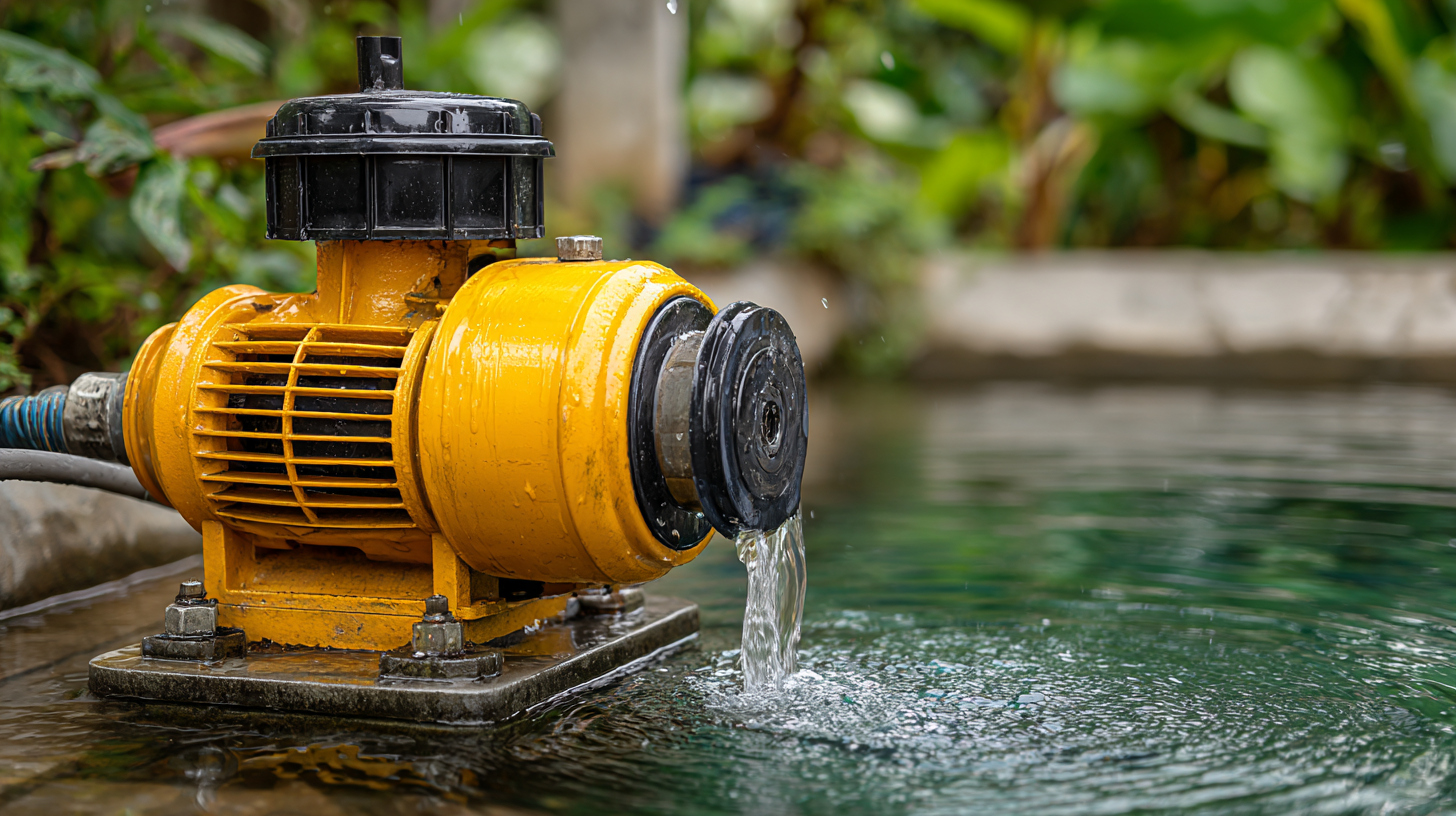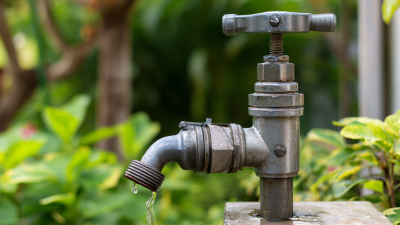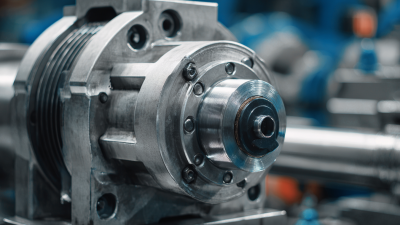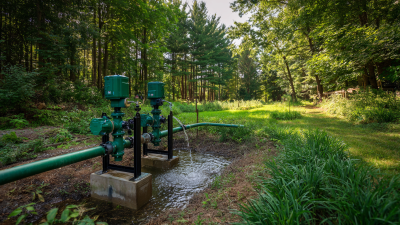Our Blog
Check out our innovative pump solutions and industry insights to see what's new in the pumping industry. Stay up to date with the latest trends and news in the world of pumping technology by following our pumping technology blog.
- Home
- Blog
Exploring the Efficiency of Submersible Water Pumps: A Comprehensive Guide for Homeowners
In recent years, the demand for efficient water management solutions has surged among homeowners, highlighting the importance of technologies like the submersible water pump. According to a report by the International Water Association, the global market for submersible pumps is expected to reach
$30 billion by 2025, driven by the growing need for reliable irrigation and wastewater management systems.
 These pumps, designed for submerged applications, offer significant advantages, including superior energy efficiency and the ability to handle large volumes of water with minimal noise.
This comprehensive guide aims to provide homeowners with essential tips and insights into selecting the right submersible water pump, ensuring optimal performance and longevity, while demonstrating how informed choices can lead to sustainable water usage and better energy conservation in the household.
These pumps, designed for submerged applications, offer significant advantages, including superior energy efficiency and the ability to handle large volumes of water with minimal noise.
This comprehensive guide aims to provide homeowners with essential tips and insights into selecting the right submersible water pump, ensuring optimal performance and longevity, while demonstrating how informed choices can lead to sustainable water usage and better energy conservation in the household.
Understanding Submersible Water Pump Efficiency Ratings: A Homeowner's Guide
When considering submersible water pumps, homeowners must pay attention to efficiency ratings to ensure optimal performance and energy savings. Efficiency ratings are often represented as a percentage, indicating the ratio of useful power output to the total power input. According to the Hydraulic Institute, high-efficiency submersible pumps can achieve ratings of 75% to 90%, significantly impacting both the operating cost and the longevity of the pump. For instance, a pump with a 90% efficiency rating will use less electricity compared to those rated at 70% or lower, leading to substantial savings on utility bills over time.
Additionally, it’s essential for homeowners to be aware of the various factors affecting pump efficiency, such as flow rate and head height. The American Society of Civil Engineers (ASCE) states that for every foot of head height, a submersible pump can lose up to 3% of its efficiency if not properly matched to its application. Therefore, selecting the correct size and type of pump can lead to optimized performance. Homeowners should also consider the impact of material quality and design on efficiency, as pumps constructed from durable, corrosion-resistant materials tend to operate more effectively and have a longer lifespan.
Top 5 Submersible Water Pumps Based on Energy Efficiency Metrics and Performance
When selecting a submersible water pump for your home, energy efficiency and performance are paramount. The top five submersible water pumps on the market have been evaluated for their ability to conserve energy while delivering optimal functionality. These pumps not only reduce utility costs but also contribute to a more sustainable household operation. Key metrics such as the pump's power consumption, flow rate, and lift capacity were scrutinized to ensure that homeowners can make informed decisions.
Among the top contenders, the Grundfos SP Series stands out with a remarkable balance of energy efficiency and performance. Its innovative design allows for minimal energy loss while pumping water effectively across various depths. Another noteworthy mention is the Zoeller M53, favored for its robustness and superior efficiency ratings, making it ideal for both residential and light commercial use. Lastly, the Wayne CDU980E combines high performance with low operational costs, proving to be a reliable choice for homeowners seeking durable and cost-effective solutions for their water pumping needs.
Exploring the Efficiency of Submersible Water Pumps: A Comprehensive Guide for Homeowners
| Pump Model | Power Consumption (W) | Maximum Flow Rate (GPH) | Efficiency Rating (%) | NPSH Required (ft) | Weight (lbs) |
|---|---|---|---|---|---|
| Model A | 350 | 3000 | 85 | 10 | 25 |
| Model B | 400 | 2800 | 80 | 12 | 30 |
| Model C | 250 | 3500 | 90 | 8 | 20 |
| Model D | 320 | 2900 | 83 | 11 | 27 |
| Model E | 380 | 2600 | 78 | 13 | 29 |
Comparative Analysis of Submersible Pumps: GPM, HP, and Head Measurements Explained
When selecting a submersible water pump for residential use, understanding key measurements such as Gallons Per Minute (GPM), Horsepower (HP), and head height is crucial. GPM indicates the flow rate of the pump, essentially how much water it can move in a minute. Homeowners should consider their specific water needs; for instance, a higher GPM is beneficial for tasks like irrigation, while a lower GPM might suffice for more minor applications, such as draining a basement.
Horsepower is another vital factor, as it reflects the pump's power and capacity. A pump with higher HP can typically handle more demanding tasks, lifting water from deeper sources or dealing with thicker liquids. However, choosing a pump with excessive horsepower may lead to increased operational costs. Additionally, understanding head measurements, which denote the maximum height the pump can elevate water, ensures that the chosen pump meets the elevation needs of the home. Properly evaluating these elements will guide homeowners in selecting the most efficient submersible pump for their specific requirements.
Efficiency of Submersible Water Pumps
Cost-Benefit Analysis: Long-Term Savings with Energy-Efficient Submersible Pumps
 When considering home water management solutions, energy-efficient submersible pumps stand out for their long-term savings potential. These pumps are designed to operate with minimal energy consumption while delivering reliable performance. The initial investment might be higher compared to traditional pumps, but homeowners often find that the reduced utility bills and lower maintenance costs offset this expense over time.
For instance, energy-efficient models can reduce electricity costs by up to 50%, making them a financially sound choice in the long run.
When considering home water management solutions, energy-efficient submersible pumps stand out for their long-term savings potential. These pumps are designed to operate with minimal energy consumption while delivering reliable performance. The initial investment might be higher compared to traditional pumps, but homeowners often find that the reduced utility bills and lower maintenance costs offset this expense over time.
For instance, energy-efficient models can reduce electricity costs by up to 50%, making them a financially sound choice in the long run.
In addition to direct savings on energy bills, homeowners can benefit from the durability and longevity of submersible pumps. High-efficiency models typically feature advanced engineering and materials that withstand harsh conditions, reducing the frequency of replacements. This not only conserves resources but also contributes to a more sustainable approach to water management.
A cost-benefit analysis reveals that the combination of lower operational costs and extended lifespan makes energy-efficient submersible pumps an attractive investment for any homeowner looking to optimize their water systems.
Choosing the Right Submersible Pump: Key Factors and Industry Recommendations
When choosing the right submersible pump for your home, several key factors come into play. First, assess the type of fluid you’ll be pumping—whether it’s clean water, wastewater, or a mix. This will help determine the pump's necessary specifications such as material and size. Additionally, consider the pump's capacity and power rating, which are crucial in ensuring it meets your specific water removal needs.

Another important factor is the pump's head height, which is the maximum distance the pump can move water vertically. Understanding this requirement helps in selecting a pump that can efficiently transport water from its source to the desired discharge point. Furthermore, pay attention to the manufacturer's recommendations, as reputable brands often provide clear guidelines on the best pump for various applications. Doing thorough research and consulting with industry professionals can lead you to the most suitable choice, ensuring your investment is efficient and tailored to your home’s requirements.
Related Posts
-

Unlocking Efficiency: The Ultimate Guide to Choosing the Right Motor Pump for Your Needs
-

Essential Guide to Choosing the Perfect Well Water Pump for Your Home Needs
-

Understanding the Innovations of Pump Manufacturers in Modern Industrial Applications
-

Top 5 Benefits of Upgrading Your Well Pumps for Improved Water Quality and Efficiency

